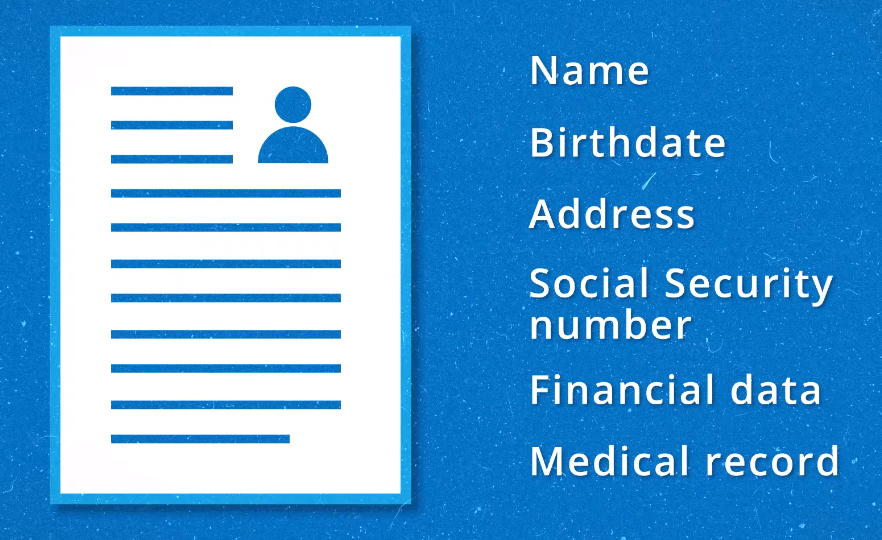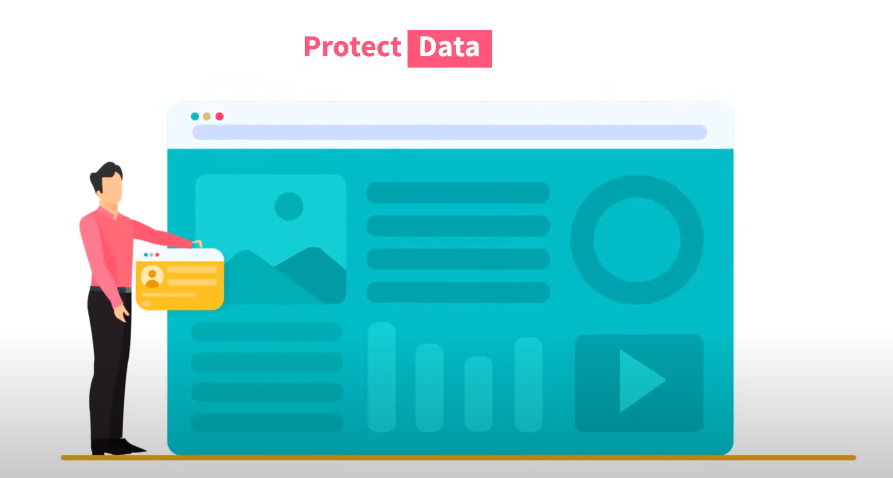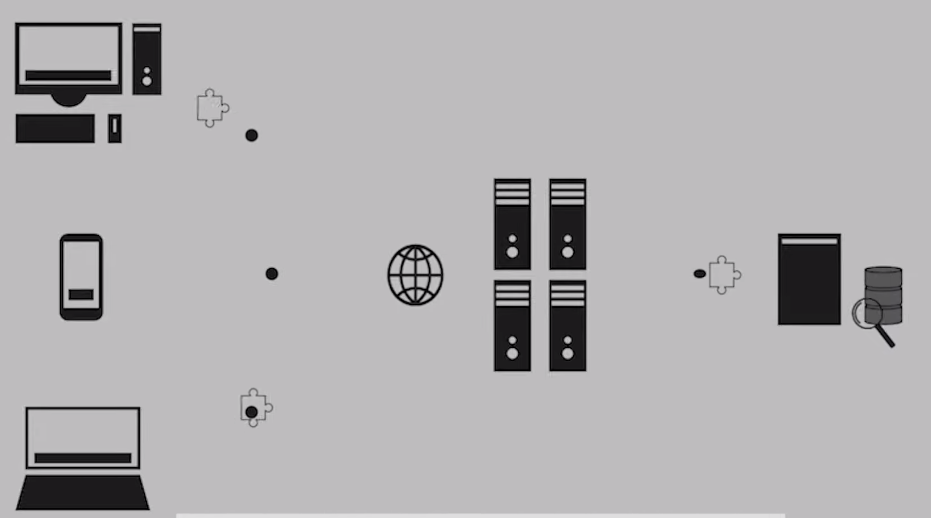Introduction
Definition Of Data Privacy

Data privacy refers to the protection of personal data from unauthorized access, use, or disclosure. Personal data includes any information that can be used to identify an individual such as name, address, social security number, and email address. With the increasing amount of personal data being generated and collected by individuals and organizations alike, ensuring its privacy has never been more important.
Importance Of Data Privacy Readiness
Data privacy readiness is important because it helps organizations protect sensitive information from unauthorized access, theft, or misuse. This includes personal and confidential data such as credit card details, medical records, financial information, and employee data. A lack of preparedness can result in reputational damage, legal liability, and loss of customer trust.
Understanding Data Privacy Regulations
Overview Of Data Privacy Regulations
Data privacy regulations are becoming increasingly important in today’s digital world. Organizations must comply with laws and regulations to protect personal information collected from individuals. The key factors that organizations should consider when assessing data privacy readiness include the nature of the data being collected, stored, processed, or transmitted; the sensitivity of the data; and the jurisdiction where the organization operates.
In 2018, a major regulation known as General Data Protection Regulation (GDPR) was introduced by European Union. This regulation imposes strict requirements on how organizations handle and store the personal information of EU citizens. In addition to this, several state-level regulations have been enacted in recent years such as California Consumer Privacy Act (CCPA), New York Security Breach Notification Act (SBNA), etc.
Importance Of Adhering To Data Privacy Regulations
Adhering to data privacy regulations is a critical component of operating any modern business. Companies that collect, store, and process personal information have a responsibility to protect that data from unauthorized access or misuse. In addition to ethical considerations, there are also legal requirements for companies to follow when handling sensitive information. Failure to comply with these regulations can result in significant financial and reputational damage.
One of the key factors in assessing data privacy readiness is understanding the specific regulations that apply to your business. Depending on the industry you operate in and the types of data you handle, different laws may apply at local, state, or federal levels. For example, companies that do business with customers in the European Union must comply with the General Data Protection Regulation (GDPR), while healthcare providers must follow HIPAA guidelines.
Defining Data Privacy Readiness
What Is Data Privacy Readiness?

Data privacy readiness is the ability of an organization to protect sensitive data against unauthorized access, modification, or disclosure. It involves ensuring that the right measures are in place to prevent data breaches and safeguard customer information from cyber threats. Data privacy readiness requires a comprehensive approach that involves identifying potential risks, establishing policies and procedures for data protection, and ensuring compliance with relevant laws and regulations.
How Is Data Privacy Readiness Measured?
There are several key factors to consider when assessing an organization’s data privacy readiness.
An understanding of the regulatory environment is essential. This includes having a comprehensive knowledge of applicable laws and regulations such as GDPR, CCPA, and HIPAA. Secondly, an organization’s policies and procedures should be reviewed to ensure they align with regulatory requirements. Thirdly, employee training programs should be in place to educate staff on how to handle sensitive information appropriately.
Other factors that contribute to measuring data privacy readiness include conducting regular audits and assessments of internal processes and systems, implementing technical safeguards such as encryption and access controls, creating a culture of transparency around data collection practices, and having incident response plans in place for potential breaches.
Key Factors To Evaluate Data Privacy Readiness
-
-
Data Governance
-
Importance Of Data Governance In Data Privacy Readiness
Data governance refers to the framework, policies, procedures, and standards that organizations use to manage and protect their data assets. Good data governance practices are essential for ensuring that sensitive information is used appropriately and protected from unauthorized access or misuse.
Data governance is particularly important in the context of data privacy because it helps organizations ensure that they are complying with relevant laws and regulations. Effective data governance can help companies identify where sensitive information resides within their systems, who has access to it, how it’s being used, and whether any risks exist. This level of visibility into an organization’s data can be a critical first step in building a comprehensive approach to protecting customer privacy.
Key Elements Of A Data Governance Program
One of the key elements of a data governance program is establishing clear policies and procedures for data handling. This includes defining what types of data are collected, who has access to it, how it is used, and how long it is retained. It also involves ensuring compliance with industry regulations such as GDPR and CCPA.
Another important aspect is having a designated team responsible for overseeing the implementation and enforcement of these policies. This team should have a deep understanding of the organization’s data landscape and be able to identify potential risks or gaps in compliance.
Regularly monitoring and auditing the effectiveness of the data governance program is critical to ensure ongoing compliance with regulations and best practices. This may involve conducting assessments, engaging external auditors or consultants, or utilizing technology solutions to monitor data usage across the organization. Overall, a robust data governance program can help organizations effectively manage their data assets while minimizing risk exposure.
-
-
Data Classification
-
Importance Of Data Classification In Data Privacy Readiness
Data classification refers to the process of categorizing data based on its level of sensitivity and value. Classifying data helps organizations identify which types of information require additional protection, such as personal identifying information (PII) or confidential business data. By doing so, organizations can allocate resources more effectively and prioritize their efforts accordingly.
Data classification also enables companies to comply with regulatory requirements, such as GDPR or CCPA. These regulations have specific guidelines for how sensitive data should be handled and protected, and failure to adhere to these guidelines can result in hefty fines or legal action. Therefore, having a clear understanding of what constitutes sensitive information and how it should be classified is crucial for any organization that handles personal or confidential data.
Types Of Data Classification
There are several types of data classification, each with its own criteria for categorization. The most common types include personally identifiable information (PII), confidential data, sensitive data, and public data.
Best Practices For Data Classification
-
- Establish clear guidelines for classifying data based on the sensitivity and potential impact of disclosure or loss. Ensure that all employees understand the criteria used to classify data and their responsibilities in handling different types of information.
- Regularly review and update your organization’s data classification policies as new threats emerge or new regulations come into effect. This will help ensure that your organization remains compliant with applicable laws and regulations.
- Implement appropriate technical measures such as encryption or access controls to protect classified data from unauthorized access or disclosure. Regularly test these measures to ensure they remain effective against emerging threats.
-
-
Data Security
-
Importance Of Data Security In Data Privacy Readiness
Data security refers to the measures put in place to safeguard data against cyber threats such as hacking, malware, and phishing attacks. Ensuring that your organization has robust data security protocols in place can help prevent data breaches that could lead to costly legal and reputational consequences.
Data security also plays a crucial role in compliance with various regulatory requirements such as GDPR and CCPA. These regulations require organizations handling personal information to implement adequate security measures to protect the confidentiality, integrity, and availability of this information. Failure to comply with these regulations may result in steep penalties and fines.
Types Of Data Security Measures
There are various types of data security measures that organizations can employ to safeguard their valuable data. These include encryption, authentication, access controls, firewalls, intrusion detection systems (IDS), and antivirus software.
Encryption is the process of converting plain text into coded text to prevent unauthorized access or theft of data during transmission or storage. Authentication ensures that only authorized personnel can access sensitive data by verifying their identity through a password or biometric system. Access controls limit the level of data accessibility based on user privileges, roles, and responsibilities.
Firewalls act as a barrier between an organization’s internal network and external networks such as the Internet to prevent unauthorized access. IDS monitors network traffic for suspicious activity and alerts security administrators when potential threats arise. Antivirus software scans files for malicious code before they are executed on a device.
Best Practices For Data Security
Implementing strong access controls. This means setting up different levels of access based on an employee’s job role and responsibilities. Limiting access to sensitive data to only those who need it reduces the risk of unauthorized access or accidental leaks. It’s also essential to monitor and track user activity, so any suspicious behavior can be detected early on.
Encryption. Encryption ensures that even if someone does gain unauthorized access, they won’t be able to read or use the information without a decryption key. There are several encryption methods available, including end-to-end encryption, which encrypts data from sender to recipient, and at-rest encryption, which encrypts data when it’s stored in databases or other storage systems.
Vulnerability assessments and penetration testing. These tests help identify weaknesses in a company’s security protocols so that they can be addressed before a breach occurs. It’s important to note that implementing these best practices requires ongoing effort and investment as new threats emerge continually, making regular updates necessary for maintaining effective protection against cyber-attacks.
-
-
Data Breach Preparedness
-
Importance Of Data Breach Preparedness In Data Privacy Readiness
Data breaches can happen to any organization, big or small. Being prepared for a data breach is not just important, but also necessary in today’s digital world. A comprehensive data breach response plan should be put in place to mitigate the damage caused by the breach and prevent future attacks.
Data privacy readiness involves more than just implementing security measures; it requires an ongoing process of identifying and mitigating risks. Data protection policies and procedures should be regularly reviewed and updated based on changes in technology, legal requirements, or business practices. By taking proactive steps toward data security, organizations can reduce the risk of data breaches while building trust with their customers.
Key Components Of A Data Breach Response Plan
The first step is to have a dedicated team responsible for handling the situation, including members from different departments such as IT, legal, and public relations.
Another critical component of a data breach response plan is having clear communication channels in place. This includes informing all stakeholders about the incident and providing regular updates on how it’s being handled. The communication should also extend beyond internal parties to external ones like customers or partners who may be affected.
Companies must conduct regular simulations and tests of their data breach response plan to ensure that it’s effective before an actual incident occurs. This will help identify any gaps or weaknesses in the process and allow teams to refine their strategies accordingly.
-
-
Employee Training and Awareness
-
Importance Of Employee Training And Awareness In Data Privacy Readiness

Employee training and awareness play a crucial role in ensuring data privacy readiness within an organization. This is because employees are the ones who handle sensitive information on a daily basis, and they need to be aware of the risks involved and how to mitigate them. Training helps employees understand data privacy laws and regulations, as well as how to identify potential security threats.
In addition, employee awareness can help create a culture of security within the organization. Employees who are trained in data privacy best practices will take ownership of their responsibilities when it comes to protecting sensitive information, and they will be more likely to report any suspicious activity. This can help prevent data breaches before they occur.
Topics To Cover In Employee Training Programs
Employees should be educated about the types of data that can be classified as confidential and how it is collected, processed, or stored. This knowledge helps them identify potential risks associated with data breaches.
Another important topic is how to handle sensitive information securely. Employees need to know best practices for storing passwords safely, avoiding phishing scams, and using secure communication channels. They also need to learn about different security controls such as firewalls and encryption techniques that can help protect confidential data.
Employee training programs should cover legal obligations regarding data privacy laws such as GDPR or CCPA. Employees need to understand what constitutes a breach of these legislations and their role in preventing any violations from happening in the first place. Proper training will equip them with the necessary skills needed to safeguard sensitive information while complying with regulatory requirements.
-
-
Third-Party Risk Management
-
Importance Of Third-Party Risk Management In Data Privacy Readiness
Organizations that rely on third-party vendors to process or manage their customer data must ensure that these vendors are taking adequate measures to protect the data. This is particularly important given the increasing frequency and severity of cyber-attacks and data breaches.
The first step in third-party risk management is identifying all vendors with access to sensitive data. Once identified, organizations should assess each vendor’s security practices, policies, and procedures. This may include reviewing contracts to ensure that vendors are contractually obligated to maintain appropriate levels of security.
Key Elements Of A Third-Party Risk Management Program
The key elements of a third-party risk management program include an effective communication strategy, appropriate documentation and monitoring procedures, and a comprehensive due diligence process. An organization should establish clear lines of communication with its third-party vendors to ensure that both parties understand their respective responsibilities. Documentation is also critical as it helps to track the progress of the risk management program.
In addition to establishing effective communication and documentation protocols, an organization must also monitor its third-party relationships continuously. This includes ongoing assessments of vendor security measures, compliance with applicable data privacy laws, and other relevant factors. Finally, conducting due diligence on all third-party vendors is crucial for identifying potential risks before they become significant problems. Such due diligence might include background checks on key personnel or site visits to assess physical security measures.
-
-
Privacy by Design
-
Importance Of Privacy By Design In Data Privacy Readiness
One of the most overlooked yet critical factors in data privacy readiness is incorporating privacy by design. This approach puts privacy at the forefront of every aspect of a product or service’s development, ensuring that personal data is protected throughout its lifecycle. Privacy by design promotes proactive measures to safeguard users’ information, such as implementing data minimization and anonymization techniques and adopting strong access controls.
By embedding these principles into the very foundation of a system, organizations can significantly reduce their risk of data breaches and ensure they comply with various regulatory frameworks worldwide. Privacy by design also fosters transparency and trust between companies and their customers by establishing clear communication channels to inform users about how their data is being collected, processed, and stored.
Key Principles Of Privacy By Design
Implementing these principles successfully requires a shift in mindset away from compliance-based approaches towards one that embeds data protection into all aspects of product development. It is particularly important when developing technologies handling personal data such as AI-powered solutions or IoT devices where risks may be high due to their increased complexity.
-
-
Incident Response and Remediation
-
Importance Of Incident Response And Remediation In Data Privacy Readiness
A well-designed incident response plan can help prevent or minimize the impact of security incidents on an organization’s sensitive data. The incident response plan should outline the roles and responsibilities of each member involved in responding to a security breach. It should also identify the types of incidents that require immediate attention, such as unauthorized access attempts or malware infections. Regularly testing and updating the incident response plan can ensure that all members are prepared to handle any potential security threat.
Moreover, remediation is equally important when it comes to data privacy readiness. Remediation refers to taking corrective actions after a security breach has occurred, including identifying the cause of the breach and implementing measures to prevent similar incidents in the future. By addressing vulnerabilities and weaknesses within an organization’s system promptly, remediation can help mitigate damage caused by a breach while enhancing cybersecurity resilience.
Key Components Of An Incident Response Plan
The key components of an incident response plan include risk assessment, identification and containment, eradication, and recovery, and post-incident analysis. Risk assessment involves identifying potential vulnerabilities that could lead to a breach and evaluating their likelihood and impact. Identification and containment involve detecting any suspicious activity early on and minimizing its spread throughout the organization. Eradication and recovery involve removing any malware or other malicious code from systems affected by the breach while restoring them to their original state as soon as possible. Finally, post-incident analysis involves reviewing what happened during the breach, assessing its impact on data privacy readiness, documenting lessons learned, implementing new security protocols if necessary, and educating staff members on best practices for preventing future incidents from occurring again in the future.
Frequently Asked Questions (FAQs)
How Is Data Privacy Readiness Measured?

To measure data privacy readiness, organizations should start by conducting a comprehensive assessment of their current privacy posture. This assessment should include a review of existing policies and procedures, as well as an evaluation of the organization’s technical infrastructure to ensure that adequate security measures are in place to safeguard sensitive data. Additionally, organizations should consider conducting regular risk assessments and vulnerability scans to identify potential weaknesses in their systems.
What Is A Data Privacy Readiness Assessment Checklist?
A data privacy readiness assessment checklist covers all aspects of data privacy, including physical security, access controls, network security, incident response planning, and regulatory compliance. The primary objective of this assessment is to identify any weaknesses in the organization’s current security posture.
How Can I Improve My Organization’S Data Privacy Readiness?
One way to improve an organization’s data privacy readiness is to conduct a comprehensive data audit. This will help you identify all data assets and determine where sensitive information is stored. The next step would be to implement appropriate security measures such as access controls, encryption, and firewalls to protect the identified sensitive data. Another key factor in improving an organization’s data privacy readiness is providing training and awareness programs for employees on how to handle sensitive information.
Having a well-defined incident response plan can also help in dealing with any potential breaches of sensitive information. An organization should have a clear process on how to respond quickly and effectively in the event of a breach. Regular testing and updating of these plans are essential as new threats arise.
Conclusion
Data privacy readiness is essential for any business that wants to protect its customers’ personal information. The key factors that businesses need to consider when assessing their data privacy readiness include compliance with various laws and regulations, internal policies and procedures, employee training programs, and third-party vendor management practices. Companies must develop a comprehensive data protection plan that involves regular risk assessments of their systems and processes to identify potential security threats.
